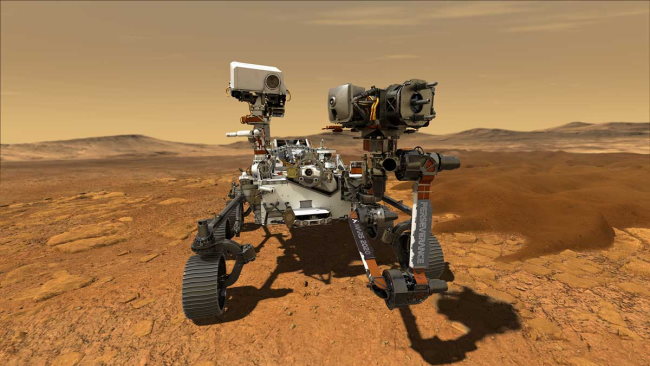Water on the Moon, Starlink failure rate, new information about phosphine on Venus, molecules on Titan and Perseverance news
Failure rate of Starlink satellites roughly 3%
The Starlink project by SpaceX has been the subject of much debate in and outside of academic circles. The promise of free and fast internet is an enticing one for sure, but this would be at the cost of our night sky and observing opportunities for astronomers, not to mention potentially triggering a catastrophic chain reaction where two satellites collide, explode and send out thousands of smaller pieces that collide with other satellites. This effect is called Kessler syndrome.
 Image Credit: SpaceX
Image Credit: SpaceX
Now eyes are pointed at SpaceX as a 3% failure rate for their satellites has been reported, that basically became 250 kg (550 lbs) pieces of uncontrollable space junk, increasing the number of non-functioning satellites in orbit by 11% to 40% depending on whether or not the future models will have the same failure rate.
SpaceX themselves state that even with this failure rate the chance of collision is less than 1% in a decade and assures everyone that there is nothing to worry about. Additionally, any defective satellites will likely deorbit and burn up in the atmosphere between one to five years.
No phosphine on Venus after all?
Last month the astronomical world was set ablaze by the possibility of alien life in the atmosphere of Venus. Although even back then scientists were skeptical about the presence of these phosphines being a definitive biomarker, now the very detection of them has become a subject of discussion.
The data, taken with the ALMA telescope is notoriously hard to work with and the researchers have to be very careful about what methods they apply to the data. This was shown by the team of prof. Ignas Snellen of Leiden Observatory (Netherlands), who took the same data and redid the analysis. They reported finding no significant sign of phosphine in the data and also reported that the methods used by the original team could in fact give false positives.
Sofia discovers water on sunlit surface of the Moon
NASA’s SOFIA telescope has confirmed the presence of water on the sunlit surface of the Moon, proving that water is not just present in the shadowy craters but could be all over the surface.
 Image Credit: NASA/Daniel Rutter
Image Credit: NASA/Daniel Rutter
The observations focusses on the Clavius crater, which is amongst the largest visible from Earth. Spectroscopic analysis of the observations revealed not only water, but also that it is relatively plentiful inside the Lunar surface amounting to roughly 1 coke can per cubic meter (or 35 cubic feet). Compared to the Earth this is not much, as the Sahara desert has about 100 times more water in its soil than the Moon, but with the right equipment the water can be extracted.
Percy is midway to Mars
 Image Credit: NASA/JPL-Caltech
Image Credit: NASA/JPL-Caltech
As of October 27th, NASA’s Perseverance rover has reached the point of half the total distance in its journey towards the red planet, that’s exactly 146.3 million miles (235.4 million kilometers.) That said, it’s important to note that Percy is not half way between Earth and Mars, rather, only half way through the whole voyage.
During this time, the science team has been, and still is, checking the functionality of all systems onboard the rover. Perseverance, which launched on July 30th of this year, is set to reach Jezero Crater on Mars on February 18th of 2021.
Molecules on Titan
Titan has beaten chemists! On October 27th, a chemical molecule so odd that most scientists are hearing about it for the first time has been detected on the complex atmosphere of Titan, Saturn’s biggest moon. This molecule is called “cyclopropenylidene” with the chemical formula “C3H2”, which has been seen before in galaxies and cosmic dust, but finding it in an atmosphere was a shock!
Titan’s atmosphere is both methane and nitrogen based, so the discovery of C3H2 is still not completely understood. Hopefully, NASA’s Dragonfly mission that’s dedicated to studying Titan will help us further understand the unique atmosphere of this moon.